By: Ochuko Okor
Introduction
The affordable housing crisis in the US is an issue of national concern. Across the country, a large percentage of low-income earners are faced with high costs and a dwindling supply of affordable homes. No state in the US has enough affordable homes to meet the demand of low-income renters and housing costs continue to rise faster than wage growth.
In Florida alone, there are 531,397 extremely low-income (ELI) renter households with a ratio of 28 affordable rental units per 100 ELI households (SOURCE: NLIHC). According to the National Low Income Housing Coalition (NLIHC), there is an estimated shortage of 6.8 million affordable rental homes for ELI families/renters. These numbers are concerning given the established link between housing and building intergenerational wealth, bolstering economic growth, and reducing childhood poverty. The lack of affordable housing in communities can have a host of negative impacts on the community’s social and economic abilities.
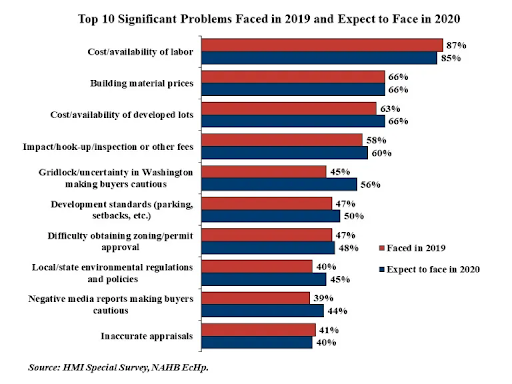
The Problem
The NLIHC reports a loss of approximately 2 trillion dollars in low wages and productivity due to a shortage of affordable housing. This begs the question: why is there a shortage of affordable housing? The answer is multifactorial, ranging from the cost of labor and construction materials to low wages and rent surges to zoning and affordable housing laws.
Housing Shortages
Cost of Labor and Construction
The cost of labor and construction materials have been rising exponentially since 2009, making affordable housing expensive to build. This has only been compounded by the Pandemic and a series of natural disasters, leading to our current hyperinflation situation. According to the National Association of Homebuilders, the cost and availability of labor were reported as a significant problem for 82% of builders in 2021, compared to 13% in 2011. The shortage of construction workers has been an ongoing problem, as the labor force has not been able to recruit and retain the skilled labor force needed to meet the demand of more than half a million skilled workers.
On the other hand, the producer price index (PPI) of raw materials used in construction has risen an estimated 24% since 2008 according to the Bureau of Labor Statistics. Residential developers are focusing on the luxury housing market which provides a high-profit margin. When these developers construct ‘affordable’ housing, the prices are marked up because the housing demand exceeds supply.
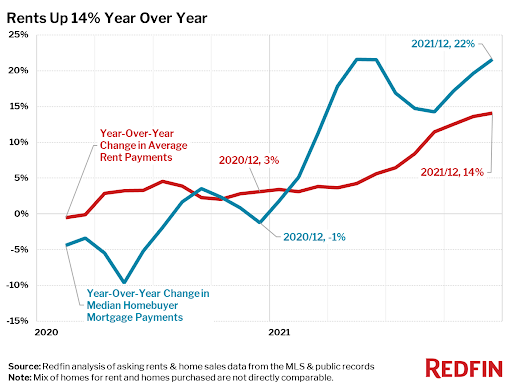
Housing Poverty
Funding Vs Income Vs Rent
One of the major glaring causes of the affordable housing crisis is the inability to afford rent and sale prices of homes. According to a Redfin survey, the average year to year rent prices experienced a surge of 14% bringing the national average monthly rent, as of December 2021, to $1,877. Major metro areas saw a rent increase of over 30%. Austin, Texas rents increased by 40% bringing the average monthly rent in Austin to $2,290 in December 2021. A household making $50,000 per year in this market would be forced to pay 55% of their income on monthly rent. In addition, these prices do not include the extra burden of the cost of transportation, feeding and other services for daily sustenance. This household would be described as cost-burdened.
The NLIHC defines a cost-burdened household as one that spends 30% of their untaxed income on rent and utilities, which accounts for about 45% of households nationally. 70% of ELI families and households in the US are cost-burdened as they spend more than half off their income on rent. There are numerous existing housing programs that are designed to assist low income families financially, but many of these programs are underfunded, as a result, they are not able to efficiently provide financial assistance to all who come to them. In fact, 3 out of 4 low income renter households in the U.S. that need assistance, do not receive it.

Zoning Laws & ‘Not In My Backyard’ (NIMBY)
Zoning laws place artificial limits on when and what kind of property can be built either by restricting certain factors such as the height of the building, parking spaces, or development of housing types (i.e. multiple family units, etc). These zoning laws have historically and disproportionately affected low-income and minorities from access to affordable housing by driving up property values, increasing construction costs, and creating a decrease in supply. These laws continue to fuel gentrification and force a spatial distribution of people and jobs. Behavioral characteristics like ‘not-in-my-backyard’ driven by community opposition to affordable housing developments creates a stigma for affordable housing and have caused a hindrance in where affordable housing units are located or built.
Natural Disasters
Natural disasters have a huge impact on the housing market; it contributes to disruptions in the supply chain, labor shortages and shortages in essential construction materials. Natural disasters have increased in frequency and intensity due to climate change. According to CoreLogic’s 2021 climate change catastrophe report, 1 in 10 US residential homes in the US were affected by natural disasters. This means a large number of homes were either destroyed or in need of reconstruction as a result of natural disasters like hurricanes, tornadoes or flooding. These events have also caused the rise and fall of rent prices in affected and neighboring areas.
The Solutions
Increased Funding and Wages
It is clear that there are numerous contributors to the lack of affordability of homes, and a simple increase in the supply of housing units will not be enough to curb the existing issues. An evident step is to increase employee wages to compete with rising market prices. Cost of living varies differently from city to city but with the national average inflation rate rising by 4.7%, goods and services are not getting any cheaper. Higher wages will help increase a household’s financial freedom.
Another approach is to invest in innovative ways to create and sustain financial subsidies to cover either a fixed percentage of housing rent or other costs. For a local level variation of the housing choice vouchers or Section 8, there can be community-level housing choice vouchers that are co-funded through private and public partnerships. Co-partnerships in financing housing programs can raise the potential of catering to more households in need of financing. It can also empower and support families to seek out affordable housing opportunities and usher them into an equity position.
Housing Stock
The housing stock needs to be populated with various housing types that can contribute to the reduction of the cost burden on low-income households in general. Concepts like row houses, and the missing middle housing, which introduces buildings like triplexes and fourplexes, will allow for the creation of denser and compact housing units within high-demand areas. Manufacturing and prototyping housing concepts like 3D printed homes and modular units can be explored to reduce the dependency on the typical raw materials used in housing construction like lumber. Multiple housing concepts like these allow neighborhoods to cater to different types of households while offering varying prices to families.
“The government has an obligation to provide financial support to everybody to find good housing, whether they can afford it on their income or not.”
– Jenny Sheutz,
How To Fix America’s Broken Housing Systems Podcast
YIMBYism & Equitable Access
It is clear that existing housing ordinances are not functioning appropriately, and they need to be revamped to equitably work for all people. The rise in housing prices and unequal spatial distribution of employment has accounted for social and economic inequalities. Many jobs tend to be in metro areas, which are surrounded by overpriced homes due to proximity to downtown amenities. Rapidly developing urban centers attract higher income households; this forces lower income families to move out to more affordable areas, which are typically in suburban areas. A large number of people move outside to areas where there’s not enough housing units built for the large inflow of cost burdened workers.
It is important that both existing and future households are protected from facing challenges due to rising tax rates, discriminatory zoning laws, and redlining. More inclusive and equitable laws should be put in place to protect households from unfair eviction and to allow families more housing options to apply for. New advocacy groups are slowly on the rise bolstering the ‘YIMBY’ or ‘Yes, In my Backyard’ prohousing movement advocating for rezoning and increased housing stock. California YIMBY, for instance, has worked to pass bills like SB-9 on a statewide level to abolish single-family home zoning and allow for the construction of more affordable and multiple building types (plexes).
ELIs and families that seek out affordable housing can also benefit from increased educational awareness on their ownership rights. One way to do this is through frequent and easily accessible opportunities of informational dispersal through public housing workshops, classes and mentoring sessions. This way households will be informed on how to generate wealth and empowered to make smart borrowing, renting and purchasing decisions.
Conclusion
The conversation about affordable housing continues, with so much data being accumulated on what the obstacles and possible solutions are, many families are still being plagued with the issue of affordability. Rising costs of materials, rent and unfair zoning laws are only exacerbating the problem and radical action on the housing system needs to happen. There should be more innovative exploration towards housing laws, financing and ensuring the growth of the affordable housing stock made available for households. The hope is that in the near future, more private and public copartnerships will drive an increased effort towards affordable housing initiatives that can turn this conversation around.
Sources:
https://www.cnn.com/2022/02/16/perspectives/affordable-housing-crisis/index.html
https://www.globest.com/2021/08/27/the-affordable-housing-crisis-is-getting-worse-say-experts/
https://reports.nlihc.org/gap/press-contact#graphics https://reports.nlihc.org/gap/2019/fl
As extreme weather events, like sea-level rise, wildfires, and other ecological disasters occur, climate change is becoming a more real and imminent threat by the day. In response, innovative concepts are spawning to mitigate effects and protect our society’s future. One such approach discussed in the sustainability and climate discourse has been regenerative placemaking. But what is this?
Regenerative placemaking offers a new, holistic approach that is actively being applied in cities on a global scale. It seeks to go beyond net-zero to create a net positive impact on the environment. The principles that support regenerative placemaking are many, including living systems thinking, biophilia, sustainable practices, and community engagement.
In this article, we are highlighting a few cities that are practicing these principles, and what can be learned from them.
1. Copenhagen, Denmark
Already known as the world’s greenest and most habitable city, Copenhagen has employed numerous regenerative placemaking tactics that contribute to its healthy living environment.
- Inclusive Public Spaces: Copenhagen has designed numerous urban development projects to create places that are healthy, sustainable, and foster inclusive social interactions. Sønder Boulevard Street in the Vesterbro neighborhood is one example. With a portion of the Boulevard developed into a recreational park, the green space helps reduce the urban heat island effect, the desired goal in Copenhagen. The park also encourages more walking and more outdoor activities which contribute to the overall health of the community.
- Energy Efficiency: The public’s support for wind power has grown substantially due to the encouragement of community-owned facilities and awareness campaigns. Based on Copenhagen’s Climate Plan, a hundred new wind turbines will be installed by 2025 to contribute to the intermittent energy already being provided from existing wind farms. Their energy efficiency extends to their built environment as well. For instance, a percentage of hotels in Copenhagen have an eco-certificate or other prestigious environmental credentials, through the help of environmental managers.
2. Medellin, Colombia
Medellin is a member of the “100 Resilient Cities” and part of the UN’s Green Cities initiative. In the midst of its natural forests, Medellin is evolving and has proven itself to be a model of social and urban transformation. The city owes its development to the collective co-creation amongst its citizens, public and private organizations. The presence of this transdisciplinary interaction has led to increased levels of community engagement. Emerging from this partnership is an image of a resilient Medellin, one with goals of safety, equity, and sustainability.
- Referred to as the ‘Corredores Verdes,’ Medellin’s Green Corridor initiative was designed to interconnect 30 green corridors within the city that has a host of widespread benefits. The corridors go beyond heat reduction, by improving biodiversity (serving as a home to new ecosystems), sequestering carbon dioxide emissions, and reducing air pollution.
- Sustainable Transportation: The city has the largest electric fleet in Colombia. Vehicles, like electric trams and cable cars, create sustainable connections all over the city, including between impoverished areas and the city centers. Medellin is aiming to be an eco-city and initiatives like these gear it closer to the goal. The city was also awarded the sustainable transport award by the UN.
3. Auckland, New Zealand
As one of the most liveable cities in the world, Auckland continues to find ways to create exceptional strategies that result in the city’s transformation. There is an emphasis placed on eco-design and energy efficiency. For example, the city provides readily available resources to assist the community to make smart choices and reduce waste–whether home or business. Unique to Auckland is its reconnection with its indigenous population and natural systems. In an effort to create diverse and inclusive community engagement, a Māori design leader, Phil Wohongi, was appointed in an aim to foster the integration of identity and culture in Auckland. The city’s outreach includes speaking and listening to various community members and taking action. In regards to natural systems, Auckland has taken up many projects that include the redevelopment of waterfronts and biophilic practices.
- Organic Link at Te Wananga, in Waitematā Harbor: A ferry basin area at Waitematā, suffers from polluted waters. The Auckland Council created a unique natural solution to this issue through the addition of ropes of mussels to the underside of the public outdoor space. Mussels are known to be capable of removing pollutants and are exceptional at filtering seawater. The project illustrates solutions that can be implemented from Māori practices.
- Te Auaunga Awa Restoration (Biophilia in Auckland): it is common to find varying levels of biophilia in Auckland in an effort to increase biodiversity and stormwater management, ranging from green roofs to natural parks. The Te Auaunga Awa (Oakley Creek) project was an upgrade for better flooding and stormwater management. It involved the naturalization of the previous concrete-lined waterway. The upgrades have led to a lush park with a meandering stream and an increase in social, healthy interaction at the Creek.
4. Montevideo, Uruguay
Montevideo is the cultural, political, and economic center of Uruguay. The city is committed to the welfare of its citizens by placing an emphasis on human rights and sustainability. Montevideo is actively implementing the Sustainable Development Goals 2030 agenda. The city has developed a number of strategic plans for development and tackling social, economic, and environmental vulnerability. In 2016, Montevideo was listed as a member of the 100 Resilient Cities Network. A Resilience Executive Unit was established then, to create and deliver a Resilience Strategy by 2018. The Strategy involved regenerative placemaking approaches like inclusivity, co-creation environmental commitments. Beyond this, Montevideo, and Uruguay as a whole, have taken up other projects to constantly improve agricultural and energy systems.
- Renewable Energy: Uruguay is one of the leading countries in renewable energy and is making exceptional headway to be carbon neutral by 2030. 98% of the country’s power is from renewable sources. The Country has also found ways to utilize the biomass produced from agricultural industries to generate electricity.
- Agricultural Systems: The Country has also found effective ways to conserve the natural forests, habitats, and biodiversity. There has also been an integration of smart technologies into the agricultural systems making it possible for “agro-intelligent” agriculture in Uruguay.
Ultimately, what we can learn from these identified cities are the huge role nature, technology, and the community plays. The effectiveness of natural solutions to environmental challenges is evident. We can look to nature as an energy resource, and utilize its cooling and filtration properties. There is also the benefit of equipping the built environment with smart tools for energy measurement and efficiency. All these tactics depend on community engagement. It is important for the community, not just to understand these principles, but also to be involved in them, so that implementation and necessary lifestyle changes will be welcomed.
There are many other cities that are implementing regenerative placemaking principles in an effort to create healthy and sustainable environments; It is only a matter of time before we start seeing the effect of these changes.
For more content like this, subscribe to our newsletter and follow us on social media!
The Role of Ebikes in the Micromobility of the Future of Cities
It’s no secret that cars are a huge contributor to greenhouse gas emissions (GHGs). In 2020, passenger cars emitted about three billing metric tons of carbon dioxide worldwide. How can we avoid these detrimental emissions while still getting to where we need to go? One of the ways is by taking a closer look at micromobility: traveling with small, lightweight vehicles, such as bikes, scooters, skateboards, etc.
We sat down with Eric Quidenus-Wahlforss, co-founder of Dance, a premium ebike subscription service in Berlin, Germany—that Future of Cities is proud to be a seed investor of—to learn more about his micromibility insights and solutions.
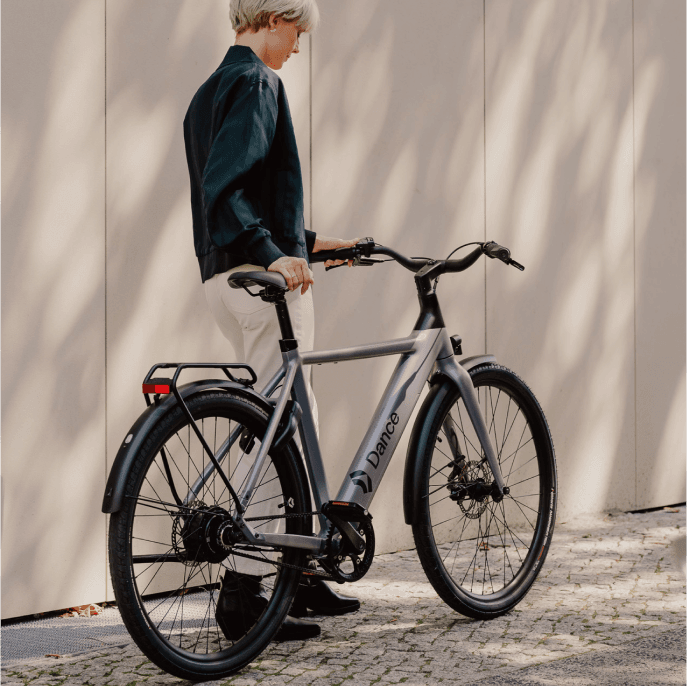
Why an ebike subscription and not one-time-use bikes?
At Dance, our goal is to make cities more sustainable, active, and connected. We believe that by making it easier for people to choose the greener commute option every time, we can achieve that mission.
Our subscription service offers members additional features that might make sustainability the easier, more appealing choice. With their membership, members can use our concierge service: a mechanic that comes to their doorstep for repairs and maintenance within 24 hours at no additional charge.
Traditional bikemakers want consumers to buy a new bike every year, yet repairs, spare parts, etc. aren’t part of the offering. And for sharing companies, members have to rely on fleet planning, among other things, to use those services within their lifestyle.
Though traditional ownership and rental companies are well-established models in micromobility, we believe that there’s an opportunity for a full-service option that is flexible, customer-oriented, and really supports people as they try ebikes over other traditional methods.
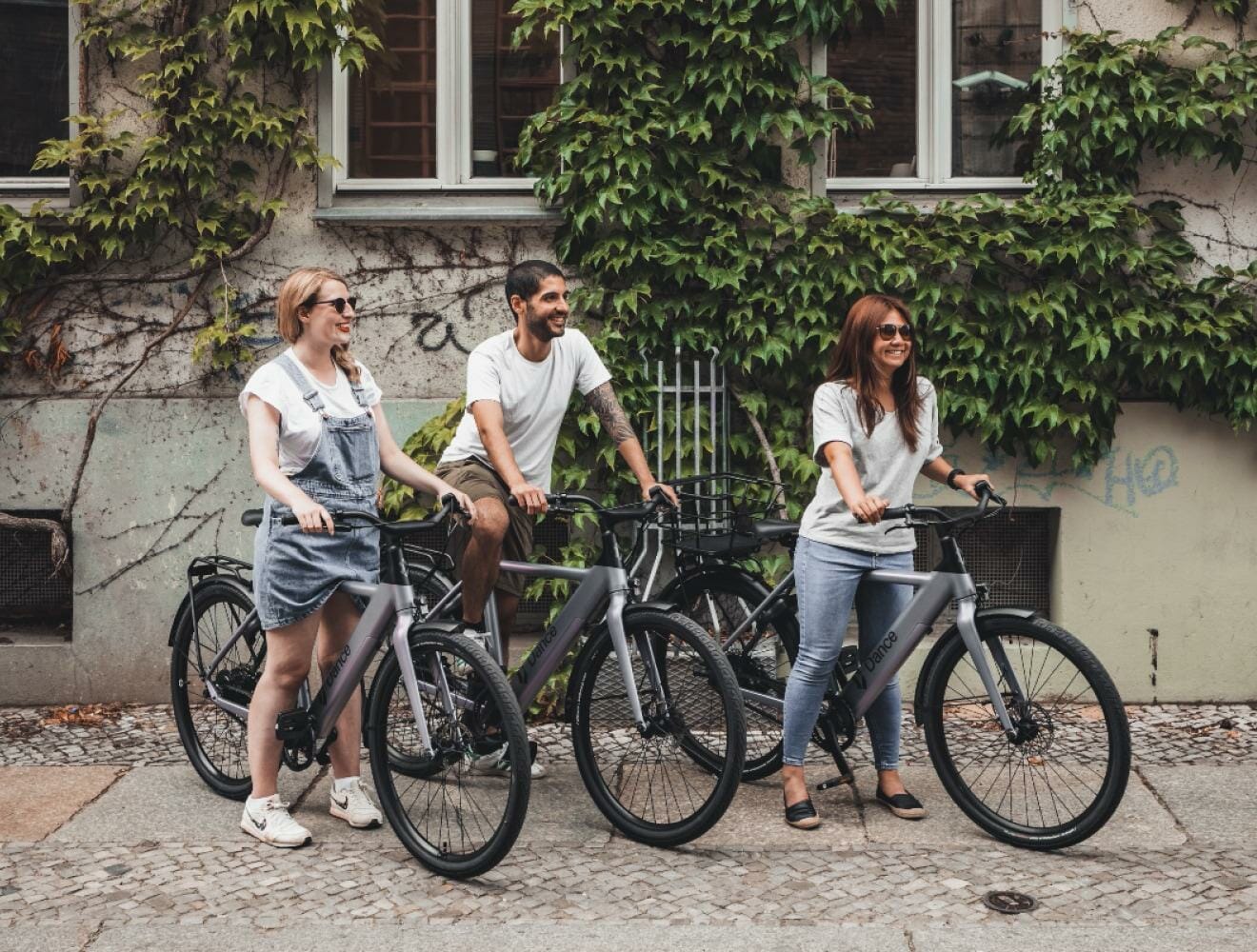
What is your goal with Dance? What do you hope to inspire or catalyze with your product and service?
Dance is a startup with big ambitions. We want our world to be more sustainable, and that starts with encouraging greener commutes in cities. We really want to show people that there is a better way to move around and that cycling infrastructure is worth prioritizing. Though cycling can be a common way to move around, it’s still not as prevalent as it could be or should be. And ebikes are key to that change. Ebikes open up cycling to more people with more variety in their commute needs, and our subscription service makes acquiring and maintaining ebikes easy.
Why start with Berlin?
I first came to Berlin 15 years ago to make music. I ended up co-founding SoundCloud and building the music platform in Berlin because of how ideal the city was for creating a company. The then-growing startup scene was just beginning, and the costs and access to talent was ideal.
Today, the same rings true. Plus, Berlin is a hub for micromobility innovation and is very open to new mobility solutions, especially around cycling. But our workforce and our perspective is global. We are one community.
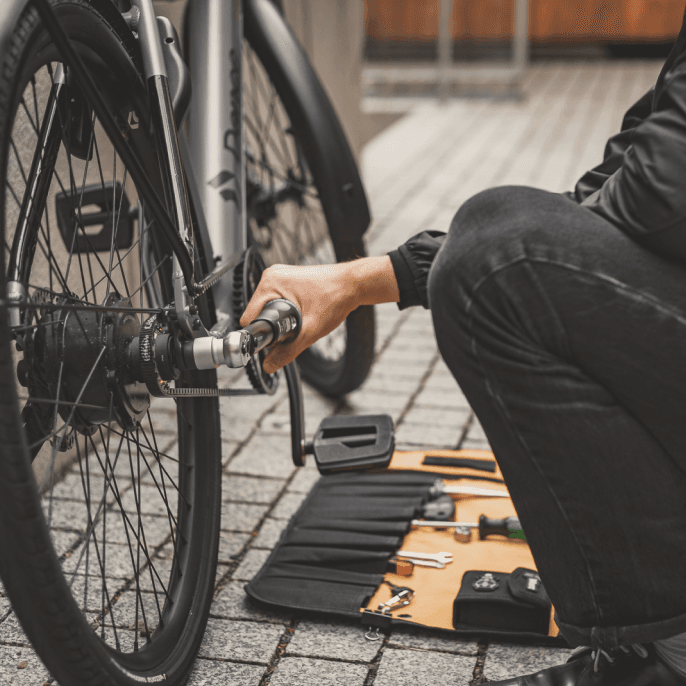
What will it take for city residents to fully embrace micromobility?
The key to adoption of any product is ease of use. Right now, you can buy an ebike, but it can be confusing or complicated for the end user. You can go to a bike shop and be faced with hundreds of choices between components and models or wait 8 months for an ebike you’ll need to assemble yourself.
Our service simplifies everything: order, maintain, and fix your ebike at the push of a button on a schedule that makes sense to you. Going out of town for a few weeks? Return the ebike with no hassle and reactivate your membership when you’re back and ready to return to your routine.
How do you think this can be achieved in the US? Are there any brands/ models already in the works in the U.S.?
I believe there is a global appetite for improved quality of life. You’ve seen an explosion of interest in increased cycling infrastructure around the world. Paris is a great example – look at what they’ve done in just a few years.
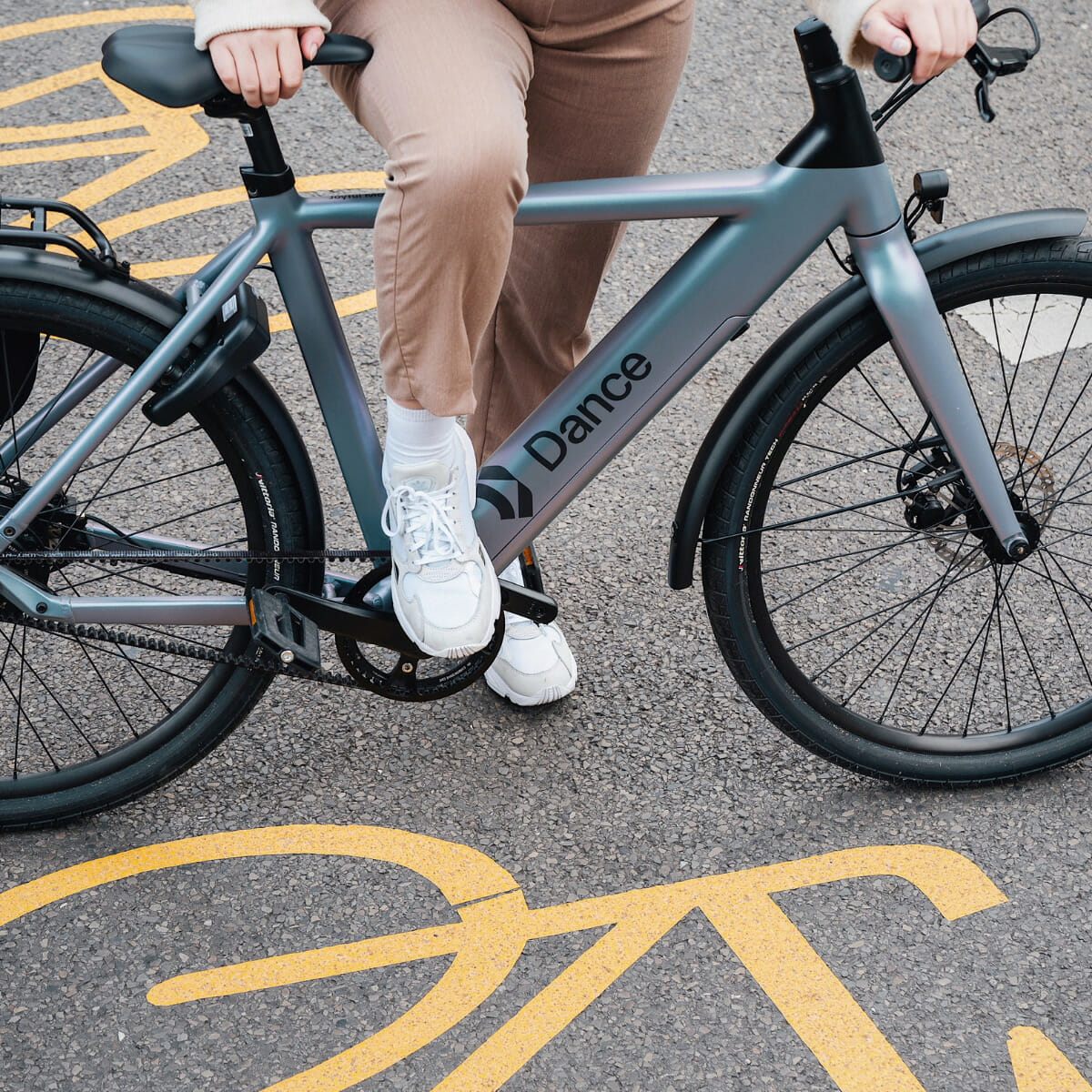
Can this method of travel replace vehicles? If yes, why and how?
Data shows that most vehicle trips in the U.S. are 6 miles or less. Those distances might not be ideal for traditional bicycles, but for an ebike that’s a compelling distance. For reference, the Dance One rides for about 34 miles on a single battery charge.
For those interested in Dance that are not in Berlin, can they expect to have access sometime in the future? Any plans for expansion?
We are live in Berlin and have a pilot in Hamburg, but further expansion is definitely on our minds! We’re focusing on making our member experience in Germany great for now, but expansion in other countries, including North America, is definitely interesting to us.
What effects has the pandemic had on the role of walkability and micromobility?
The pandemic helped more people realize the importance of creating more livable communities. A daily bike ride or walk became so important for many during lockdown, for both the physical and mental benefits. And they have realized the benefits of discovering what’s near them via cycling. Cars aren’t always the ideal mode of transportation. We are seeing more people wanting more conscious, active, and low-impact commutes.

What does the future of micromobility looks like?
The future of micromobility is more flexibility. At Dance, we believe there are new ways to create sustainable commutes and communities that go beyond traditional ownership and sharing models. The key is to offer compelling services and software that support our customer’s overall lifestyle.
Is there anything else you’d like to mention that we haven’t asked about?
We’re looking to grow the team! You can check out open roles here: https://dance.co/jobs
Want to learn more about Dance? Visit their site here.
